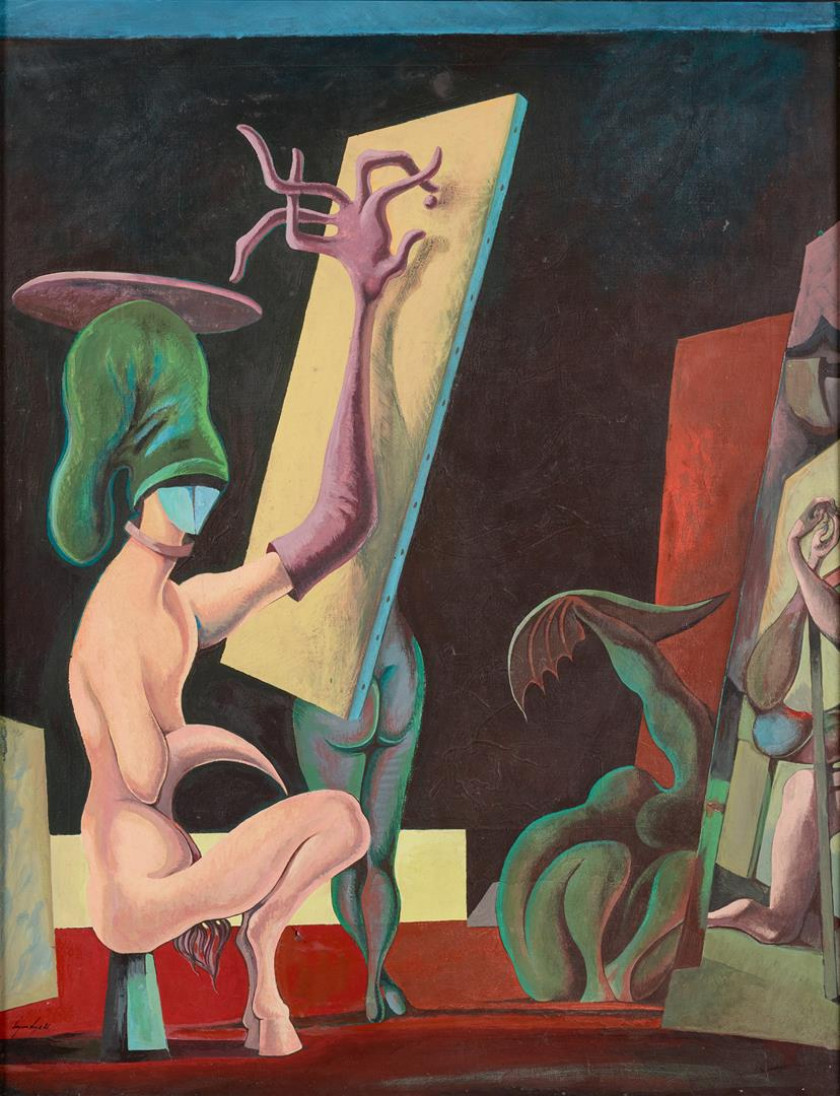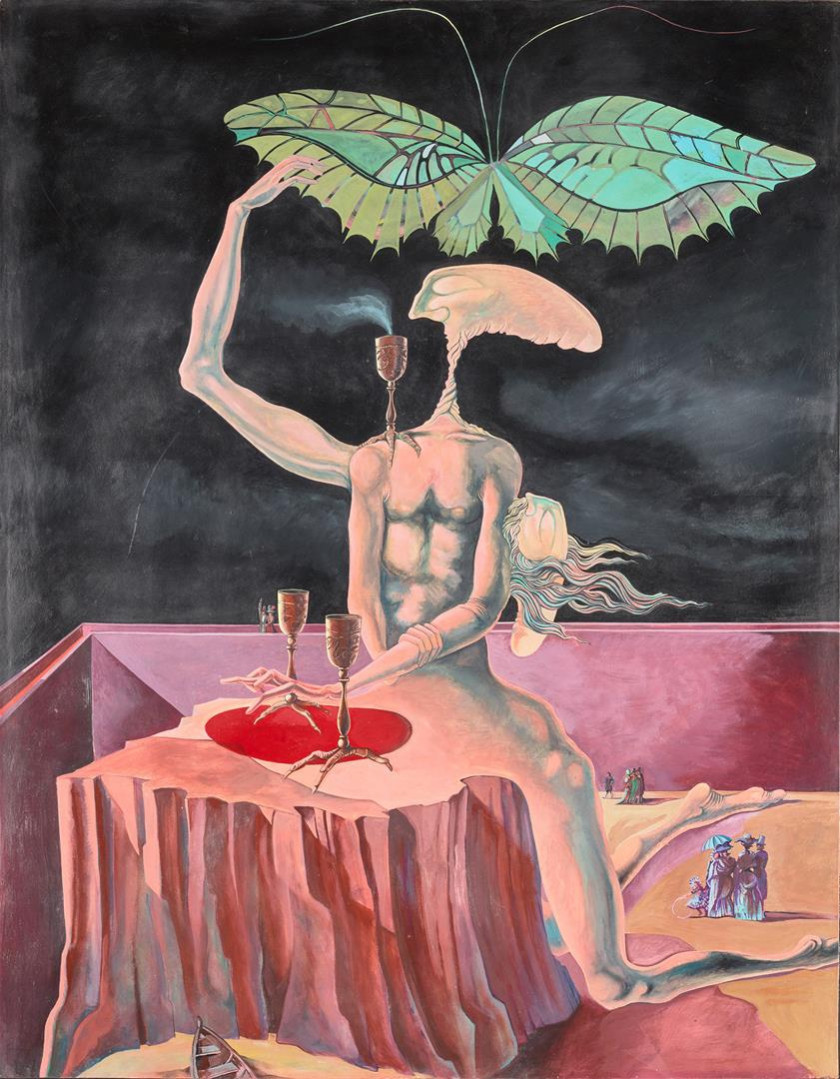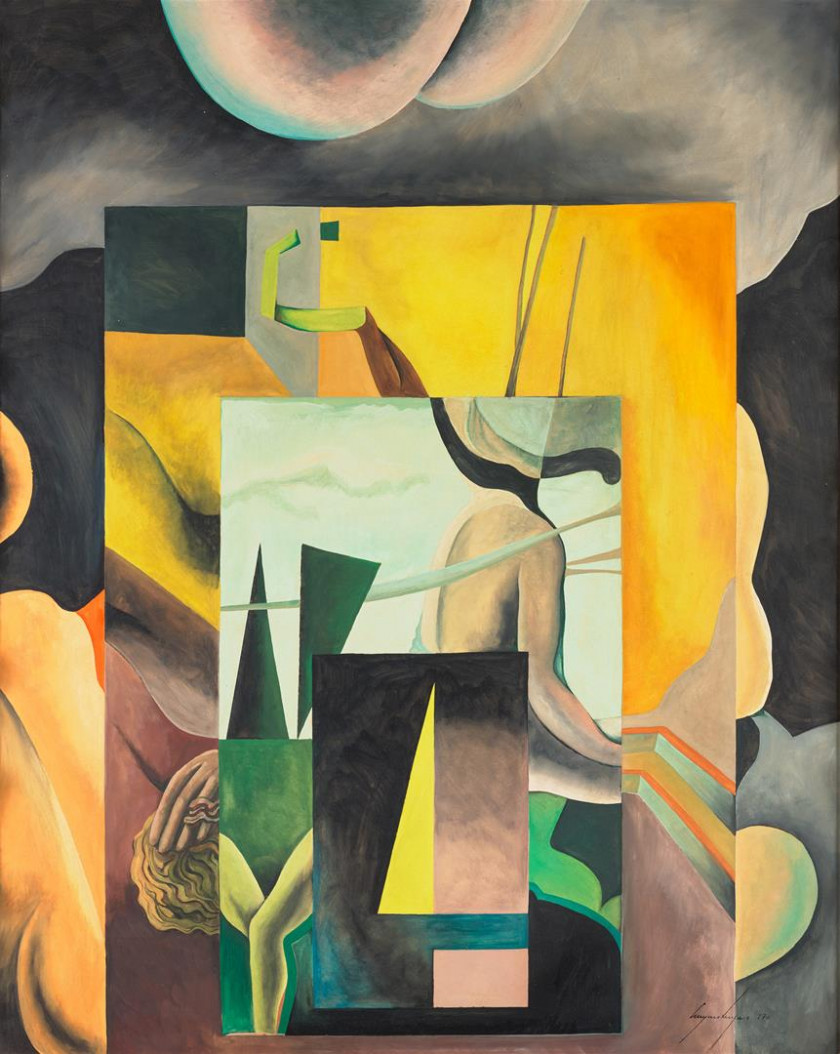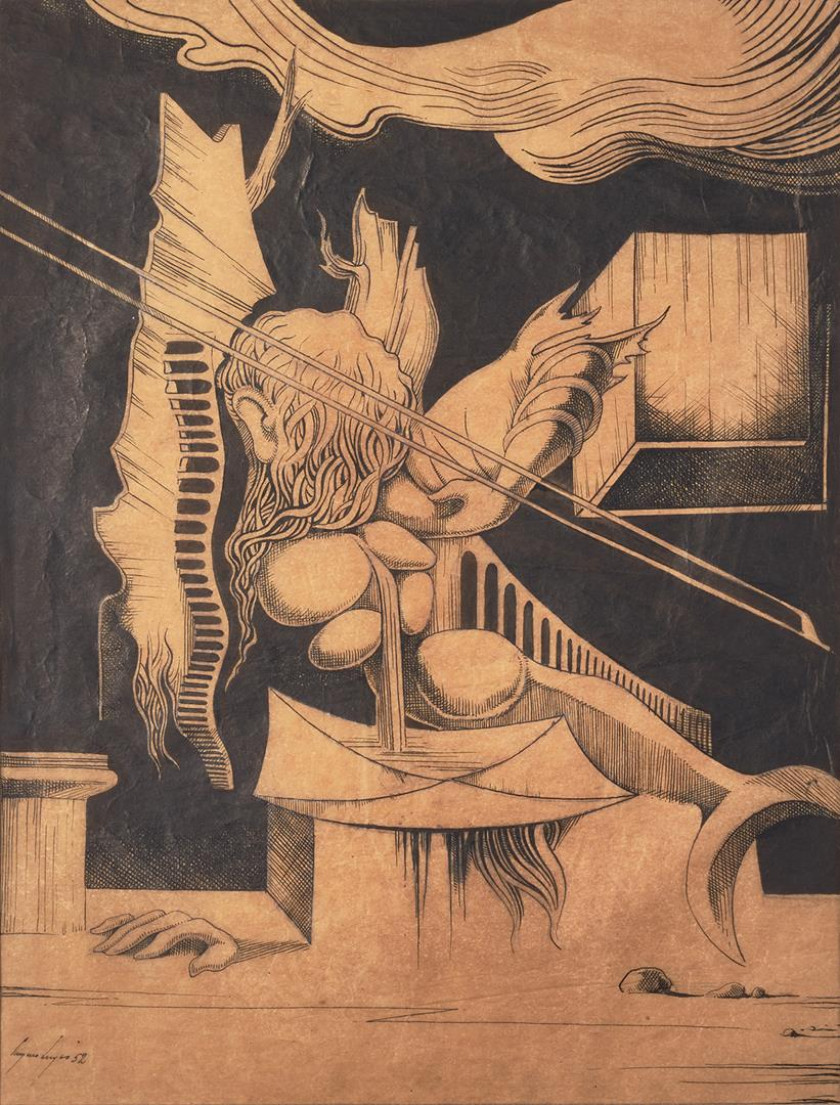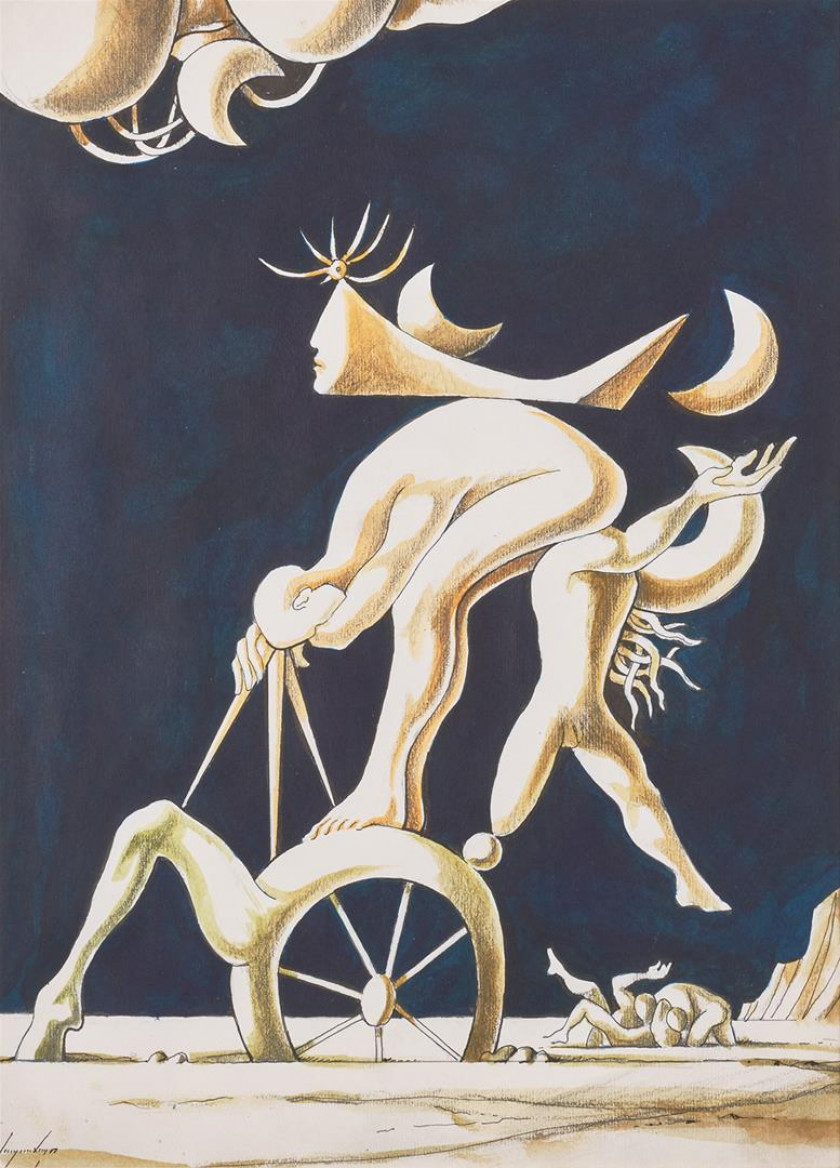Gesto impossível para coagular o sangue dos rios [Impossible gesture to coagulate the blood of rivers]
other
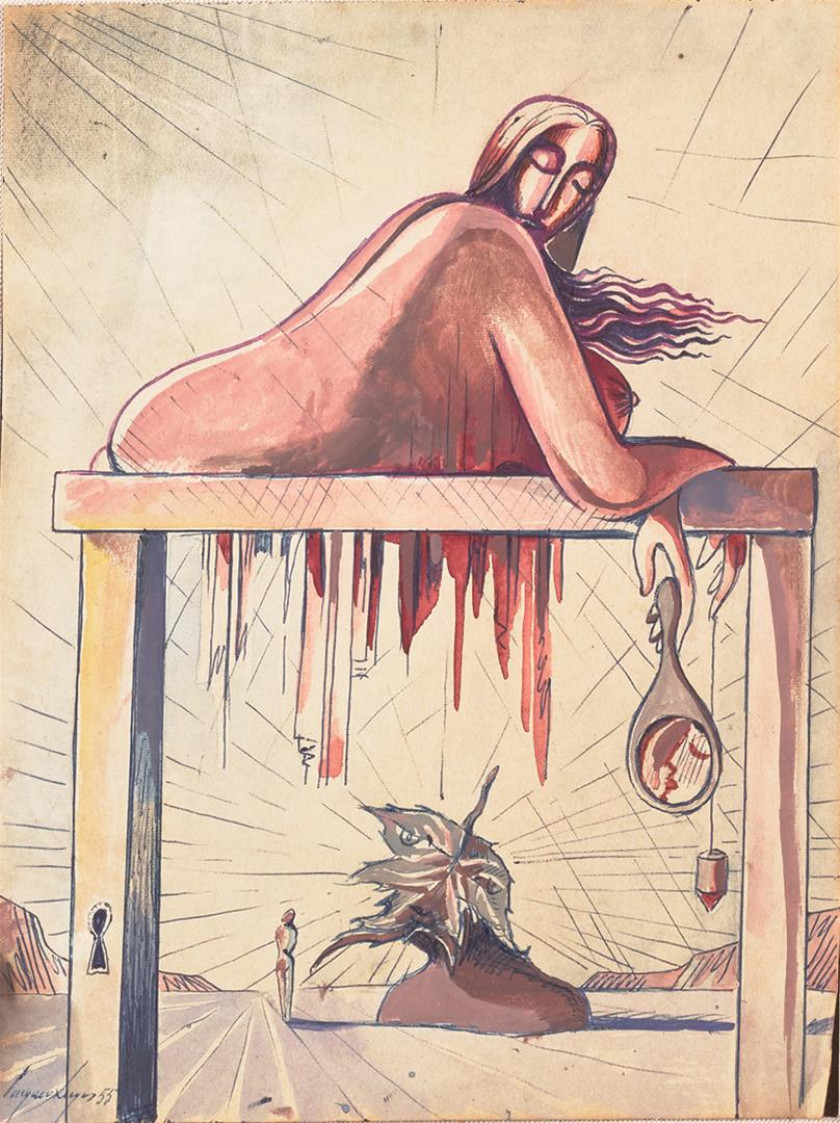

1955
Watercolour, felt-tip pen and ball-point pen on paper
20,6 x 15,5 cm
Created during his Angola years, perhaps the happiest time of his work, this 1955 drawing introduces the characteristics of his body of work: the fusion of female anatomy with the landscape, the general unease of a composition whose benign elements are transformed into nightmare scenarios, unravelling the dubious nature of the world, and the use of symbolic elements that confirm his familiarity with Art History’s legacy.
Focusing the composition on the sacrificed mother (abundant breasts, like those of a breastfeeding mother), this female body on a sacrificial altar displays a sense of sensual ease (as if she just fell asleep), providing a stark contrast to the tearing of the red streaks that fall from the table, like a curtain of blood. A mirror, in which she certainly saw her own reflex just moments ago, falls from her hand. In it, we can see the red lunar crescent of the southern hemisphere.
Under this gateway (who holds its key?) to a strange world, where the viewers eye is captured by the various oblique lines that cross the drawing, a desert like landscape is revealed. The only herbal element is the leaf that covers the head of the male figure emerging from the ground like a strange mystical lighthouse. The leaf is easily mistaken for a head, with its hair, beard, and a picking, troubling, eye. Almost facing the viewer (a slight inflection to the left seems to indicate that the mirror reflects a past moment/landscape), the mirror announces an imminent fall, confirmed by the gravity stated by the plumb line.
Numerous lines accentuate a sense of vertigo, with their contradictory vanishing points (from the ground and from the air) while creating a sense of dynamism in the composition, breaking its stillness. The scarce shadows of the two human figures counteract the omnipresence of light in this otherwise empty and inhospitable landscape.
Emília Ferreira
